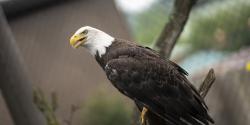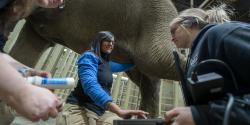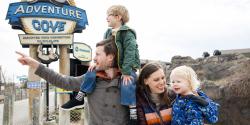Training is an essential part of animal care at the Columbus Zoo and Aquarium.
Our expert staff works closely with the animals to train them on various behaviors to better help us provide the best care for them. During these bi-monthly segments, we will focus on one training behavior and how different animals around the Zoo demonstrate it.
For this month’s Training Tales, we are focusing on our feathered friends! The birds at the Zoo come in all shapes and sizes, and our keepers train them all–from the smallest Pekin robin to the largest flamingo.
Our birds can’t tell us (and rarely show us!) when they are feeling unwell, and one of the first clues we can look at is their weight. One of the first behaviors many of the bird trainers work on is teaching birds to step onto a scale. The scale can be a scary object to some birds, so our keepers work hard to make it an enjoyable experience by offering bugs, fruit, or nectar for the birds to enjoy while they are getting their weight checked.
Husbandry is at the forefront of a lot of our trained behaviors. With some of our more tactile birds, our keepers have been able to train behaviors such as offering their foot for the keepers to inspect, stepping onto the keepers’ hand to be carried to another location, or dremmeling their overgrown beaks. These behaviors take a lot of trust and understanding between the keepers and bird. These behaviors can then be built upon, and you might see some of the more advanced behaviors in our various presentations during your Zoo visit.
Birds at the Columbus Zoo are also trained to walk onto a mirror box. Why? Birds, especially waterfowl, can suffer from something called “bumble foot” which is lesions on their feet. Walking onto a mirror box allows the keepers to look at the undersides of their feet and make sure their feet are in good condition.
Thanks for joining us for our bird-focused Training Tales! But the training at the Zoo doesn’t stop here– we still have more amazing behaviors to show. Be sure to stop back again in January to see what else the amazing animals in our care can do.









